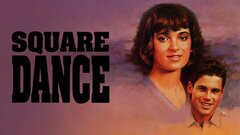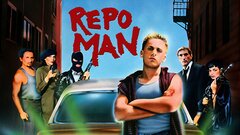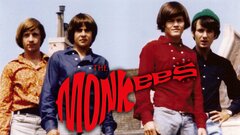Mike Nesmith

Musician • Songwriter • Actor • Producer
Birth Date: December 30, 1942
Death Date: December 10, 2021 — 78 years old
Birth Place: Houston, Texas
Though immediately recognizable to television fans as the dryly humorous, wool cap-wearing Mike on "The Monkees" (NBC, 1966-69), Michael Nesmith eclipsed his brief tenure as a pop idol with an eclectic résumé of accomplishments, including being a country-rock pioneer, a leading figure in home video distributor and one of the primary, if uncredited forces behind the creation of MTV. Nesmith's quiet demeanor and love for traditional country seemed to stand in direct contrast to the antics of the Monkees' television show and their sunny pop music, though he would pen some of their biggest hits, including "Mary, Mary" and "The Girl I Knew Somewhere."
After the group's demise, he established himself as a first-rate country-rock musician and songwriter while developing his own multimedia company, Pacific Arts. The organization would eventually develop a weekly music video series that would be purchased by Warner Cable and transformed into MTV in the early 1980s. Pacific Arts soon became a leader in home video production and distribution, while Nesmith dabbled in film production, novels and virtual live performances on the Internet. He largely resisted the rush of nostalgia that led to numerous Monkees reunions in the late '80s, and was well-regarded as a serious performer and entertainment figure.
Born Robert Michael Nesmith in Houston, TX on Dec. 30, 1940, Michael Nesmith was the only child of Warren Nesmith and his wife, Bette Nesmith. His parents separated when Nesmith was four, whereupon he moved with his mother to Dallas to be closer to her family. There, she worked clerical jobs, which eventually precipitated her extremely profitable invention, Liquid Paper, during her son's teenaged years. Nesmith himself spent his early years engrossed in chorus and drama while displaying an indifferent attitude towards his more traditional studies. He left high school in 1960 to join the U.S. Air Force, where he earned his G.E.D. before his discharge in 1962. Nesmith later met frequent musical collaborator John London while both were students at San Antonio College. They later worked the talent show and folk club circuit, eventually garnering enough interest to spur them to move to Los Angeles to pursue careers in music.
Nesmith arrived in L.A. in 1963, where he performed at various folk venues, including the famed Troubadour. There, he rubbed elbows with other up-and-coming musicians, eventually earning a publishing deal with Randy Sparks of the New Christy Minstrels. In 1965, he was among 400 applicants for a role on a new television series called "The Monkees," which concerned an aspiring rock-n-roll band. Nesmith captured the attention of producers Bob Rafelson and Bert Schneider with his blasé attitude and a wool cap he wore to keep his hair out of his eyes. The cap and his unflappable veneer became his trademarks on the show, where he often served as the wry, understated straight man for band mates Peter Tork, Davy Jones and Micky Dolenz.
Nesmith also brought a large catalog of original songs to the show, most of which were purchased for the series by Don Kirshner, head of music at the show's production company, Screen Gems. Though Nesmith initially believed that he would have some control over the music on the show and the Monkees' recordings, he soon found out that Kirshner would allow him just two original songs per album, while the band themselves could only provide vocals on their material. Several of these tunes became some of the band's biggest hits, including "Papa Gene's Blues" and "Mary, Mary," but by 1967, Nesmith had tired of being shut out of the creative process and successfully lobbied the show's producers to allow the Monkees to play all the material on their album. Kirshner was removed from the program, and the band released what many consider to be one of their finest albums, 1967's Headquarters.
Unfortunately, the album served as the beginning of the end for the Monkees, rather than the start of a new phase in their careers. Fan reaction to the newer, more experimental material was mixed, and though the group had proven their capability on records and live in concert, they could not escape the "Pre-Fab Four" label given to them by the derisive music press. Tensions between group members over the group's direction began to mount in 1968, shortly before Peter Tork left the group. The theatrical feature "Head" (1968), which was meant to bring some credibility to the Monkees, only served to further alienate longtime listeners with its psychedelic-driven music and stream-of-consciousness storyline. Nesmith poured his creative energies into a solo album, 1969's Wichita Train Whistle Songs, which featured reworked versions of his songs for the Monkees. The following year, he quit the Monkees - though at a considerable cost; Nesmith was forced to pay the default on the remaining years in his contract, which totaled $450,000. Though his departure finally granted him creative freedom, Nesmith would struggle financially for the better part of the next decade due to his decision to jump ship.
In 1970, Nesmith reteamed with his old friend John London to launch the First National Band, which also featured pedal steel legend Orville "Red" Rhodes in its lineup. Their first singles, which included the Top 40 hit "Joanne," were considered to be among the earliest country-rock hybrids of the 1970s, paving the way for the likes of the Eagles and America. He also generated hits for the Nitty Gritty Dirt Band with the singles "Some of Shelley's Blues" and "Propinquity (I've Just Begun to Care)" that same year. Less successful was the Second National Band, which again featured Rhodes along with José Feliciano. Its failure pushed Nesmith towards production as well as a short-lived tenure as the head of the Countryside label, an offshoot of Elektra Records. In 1977, he formed Pacific Arts, a multimedia company that initially released albums and cassettes before expanding into what was initially called "video records," but eventually became known as music videos.
Nesmith filmed a short promotional video for the single "Rio" from his 1977 album From a Radio Engine to a Photon Wing. The success of the effort led to the development of "Pop Clips" (Nickelodeon, 1980-81), the first weekly television series devoted to music videos. Warner Cable, which owned Nickelodeon, purchased "Pop Clips" and eventually expanded the idea to form their own music video channel, MTV. Undaunted, Nesmith began work on "Elephant Parts," a compilation of comedy sketches and music videos funded by the massive inheritance he received from his mother's estate following her 1980 death. The project won the first Grammy for Long Form Music Video, and was followed by a short-lived variety series, "Michael Nesmith in Television Parts" (NBC, 1984-85), which followed a similar format while providing early exposure for such comics as Jerry Seinfeld, Jay Leno, Garry Shandling and Whoopi Goldberg. Several segments were directed by Nesmith's old Monkees band mate, Micky Dolenz, who had become a prolific television director in the 1980s.
Nesmith's last record for nearly two decades was 1979's Infinite Rider on the Big Dogma. He soon delved into feature film production, overseeing such cult favorites as the Emilio Estevez vehicle "Repo Man" (1984) and "Tapeheads" (1985) while developing Pacific Arts into the leading company in home video production and distribution in the 1980s. A contract dispute with PBS over licensing and payments for several programs led to a lawsuit that forced Pacific Arts to cease distribution operations due to legal fees. Nesmith eventually won the suit for an undisclosed settlement fee.
The late '80s saw revived interest in Nesmith's career with the Monkees, thanks to regular airings on MTV and Nickelodeon. However, he declined to join Dolenz, Tork and Jones on the first few reunion tours before relenting in 1989. After releasing Tropical Campfires, his first solo album in nearly 13 years, Nesmith joined the original lineup to record a new album, Justus (1996), which was followed by a satirical TV special, "Hey, Hey, We're the Monkees" (NBC, 1997), directed by Nesmith. However, the reunion was short-lived; Nesmith quit a U.K. tour under a hail of bad press for his diminished playing, which revived the long-standing rancor between all four ex-Monkees. Nesmith spent much of the late 1990s and new millennium as president of the Gihon Foundation, an intellectual symposium that weighed in on important cultural issues.
He also published a novel, The Long Sandy Hair of Neftoon Zamora, which debuted as an online project before seeing release as a hardcover in 1998. He continued releasing new albums while devoted most of his energies to Videoranch 3-D, a website that hosted live performances by various bands at virtual sites, in addition to selling Nesmith-related merchandise. Following the unexpected death of his former co-star and bandmate, Davy Jones, in early 2012, Nesmith reconsidered his long-held disinclination to tour with his fellow bandmates and did several tours with Dolenz and Tork. The remaining threesome also recorded a final reunion album, 2016's Good Times, which paired the elder statesmen with songs written by younger fans like Adam Schlesinger, Andy Patridge, and Ben Gibbard as well as originals; the album received perhaps the most positive reviews of the band's entire career. Following the death of Peter Tork, Dolenz and Nesmith embarked on one final tour in 2021, capped by an emotional farewell show at the Greek Theater in Los Angeles on November 14, 2021. Michael Nesmith died at his home near Carmel, California on December 10, 2021. He was 78. By Paul Gaita
Credits

PortlandiaStream

Hey, Hey, It's the Monkees

Square Dance

Dr. Duck's Super Secret All-Purpose Sauce

Repo ManStream










